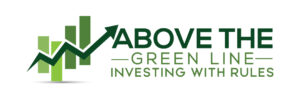
Understanding the Consumer Price Index (CPI)
The Consumer Price Index (CPI) is a key economic indicator that measures the average change over time in the prices paid by consumers for a fixed basket of goods and services. Published by government agencies such as the U.S. Bureau of Labor Statistics (BLS), the CPI reflects inflation, or the rate at which the general level of prices for goods and services rises, eroding purchasing power. As a barometer of inflation, it is critical for investors, policymakers, and businesses as it affects cost of living, economic policies, and financial markets.
Components of the CPI
CPI is calculated by tracking the prices of a wide variety of goods and services divided into major categories, such as:
- Food and Beverages: Including groceries and dining out.
- Housing: Rent, owner-occupied housing, and utilities.
- Transportation: Costs related to vehicles, fuel, public transportation.
- Medical Care: Prescription drugs, hospital services, and insurance.
- Education and Communication: Tuition fees, computers, and internet services.
- Recreation: Items like electronics, entertainment, and leisure activities.
- Apparel: Clothing and footwear.
There are two main types of CPI:
- CPI-U (CPI for All Urban Consumers): Covers about 93% of the U.S. population and is the most commonly referenced CPI measure.
- CPI-W (CPI for Urban Wage Earners and Clerical Workers): Focuses on households that earn more than half of their income from wage or clerical work, representing about 29% of the U.S. population.
Core CPI vs. Headline CPI
- Headline CPI includes the prices of all goods and services, including volatile components such as food and energy.
- Core CPI excludes food and energy prices to provide a clearer measure of long-term inflation trends, as these categories can be highly unpredictable due to external factors like weather or geopolitical events.
Impact of CPI on the Investment Community
The CPI plays a significant role in the financial markets as a measure of inflation. Since inflation affects purchasing power and the overall economic climate, it has wide-reaching consequences for investors and traders:
1. Impact on Monetary Policy and Interest Rates
Central banks, such as the U.S. Federal Reserve, closely monitor CPI data to inform decisions about interest rates. Rising inflation, as indicated by an increasing CPI, can lead to higher interest rates to curb inflationary pressures. Higher interest rates make borrowing more expensive for businesses and consumers, which can slow economic growth and affect stock prices negatively.
Conversely, if CPI shows low inflation, central banks may lower interest rates to stimulate spending and investment. Lower interest rates make borrowing cheaper, which can fuel stock market growth as businesses invest in expansion, and consumers increase spending.
2. Bond Markets
The bond market is particularly sensitive to inflation, and CPI data has a direct impact on bond yields and prices. When inflation rises, it erodes the purchasing power of fixed-income payments from bonds, causing bond prices to fall and yields to rise. In contrast, lower inflation typically boosts bond prices as investors seek the safety of fixed-income securities in a stable pricing environment.
Investors often monitor CPI trends to anticipate changes in bond yields, as rising inflation generally drives yields higher. Inflation-protected securities, such as Treasury Inflation-Protected Securities (TIPS), become more attractive during inflationary periods.
3. Equity Markets
Stock prices are also influenced by inflation as reflected in CPI. Moderate inflation is generally seen as a sign of healthy economic growth, which can benefit corporate profits and support rising stock prices. However, high inflation can squeeze corporate margins, as businesses face higher input costs (e.g., raw materials, labor) and may not always be able to pass these costs on to consumers without reducing demand.
In inflationary environments, companies in sectors like consumer staples, healthcare, and utilities may perform better, as demand for their products remains relatively stable regardless of price changes. On the other hand, sectors such as technology, which often have high valuations based on future earnings, can suffer as inflation reduces the present value of those future earnings.
4. Commodity Markets
CPI and inflation are closely linked to commodity prices, especially for energy and food. Rising CPI may reflect higher commodity prices, particularly in energy, where fluctuations in oil and gas can significantly impact inflation rates. Investors in commodities often look at CPI as a signal of future demand and price pressures, influencing the prices of raw materials like oil, gold, and agricultural products.
CPI as an Economic Indicator
1. Purchasing Power and Consumer Confidence
CPI provides insight into the purchasing power of consumers. If the CPI rises significantly, it means that consumers are paying more for the same basket of goods, which can lower disposable income and reduce consumer spending. This can negatively impact businesses that rely on strong consumer demand.
On the flip side, stable or low CPI suggests stable prices, which can bolster consumer confidence. Consumers are more likely to spend when they are confident that their purchasing power will remain intact, supporting economic growth.
2. Wage Growth and Cost of Living Adjustments
Employers, unions, and governments use CPI to adjust wages, pensions, and benefits to keep pace with rising prices. Cost of living adjustments (COLAs) are often linked to CPI increases. For investors, this is significant because higher wage growth can signal increased consumer spending potential, but it can also squeeze corporate margins if businesses have to raise wages without corresponding increases in productivity or prices.
3. Inflation Expectations
CPI is one of the key tools used to measure inflation expectations. Investors use CPI trends to anticipate future inflation rates, which influences asset allocation decisions. If CPI shows a sustained upward trend, investors may hedge against inflation by shifting into inflation-resistant assets such as commodities, real estate, or inflation-linked bonds.
In contrast, lower inflation expectations can lead to a more risk-on environment, where investors feel more confident holding stocks and growth-oriented investments.
CPI and Economic Cycles
The Consumer Price Index is a vital component in understanding different phases of the economic cycle:
- Expansion: In an economic expansion, demand for goods and services increases, which can lead to rising prices. A rising CPI in this phase can signal overheating, prompting central banks to tighten monetary policy by raising interest rates.
- Peak: At the peak of an economic cycle, CPI may reflect high inflationary pressures, especially if demand has outpaced supply. Investors may start to shift toward defensive sectors and inflation-protected assets.
- Contraction: During an economic downturn, demand falls, which can lead to disinflation or deflation (falling prices). A declining CPI during this phase signals weak demand and economic stagnation, which can prompt central banks to lower interest rates or implement quantitative easing to stimulate growth.
- Trough: At the bottom of the cycle, CPI may stabilize, signaling the beginning of an economic recovery. Investors may start looking for opportunities to invest in undervalued assets with the expectation that inflation and economic growth will pick up in the future.
Conclusion
The Consumer Price Index (CPI) is a crucial measure for understanding inflation, cost of living, and purchasing power in an economy. It affects central bank policies, interest rates, consumer confidence, corporate profitability, and asset valuations across markets. For investors, keeping a close eye on CPI data and trends can provide key insights into inflationary pressures, helping them make informed decisions about asset allocation, risk management, and portfolio strategy. Whether in bond, stock, or commodity markets, CPI is a vital economic indicator that shapes the landscape of investment opportunities.

